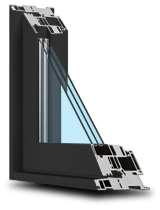Casement vs. Sliding Windows: Making the Best Choice for Your Space
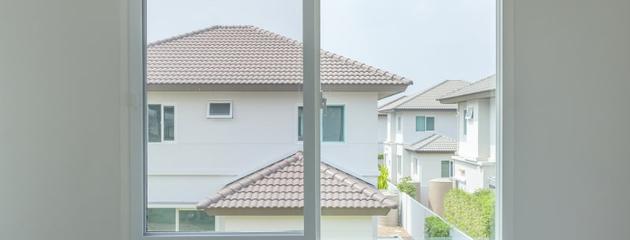
Key Takeaways
- Casement windows open outward, offering strong sealing and optimal ventilation.
- Sliding windows glide horizontally, ideal for wide openings and low-profile spaces.
- Casement windows generally provide better energy efficiency due to tighter seals.
- Sliding windows often have lower upfront and installation costs.
- The best choice depends on your energy needs, budget, and the layout of your home.
What are the key differences between casement and sliding windows?
When deciding between casement and sliding windows, it helps to understand how they function, how they’re built, and what day-to-day use looks like. These two popular styles differ significantly in mechanics, appearance, and performance.
Mechanism and Design Differences
Casement windows are hinged at the side and open outward with a crank handle, similar to a door. They usually open fully, allowing for maximum ventilation and easy cleaning from inside.
Sliding windows, on the other hand, open horizontally by gliding along a track. Typically, one panel is fixed, and the other slides open.
Frame and Appearance
Casement windows often feature a slim, unobstructed view because they don’t require a track in the middle of the frame. Their aesthetic is more vertical, which can complement narrow or tall window openings.
Sliding windows present a more horizontal, modern appearance. They work well for larger wall spaces and offer an unbroken view when open, though the fixed panel limits full ventilation.
Usability and Maintenance
- Casement Windows: Easy to operate with a crank, they are excellent for hard-to-reach places, such as over sinks. However, mechanical parts (hinges and cranks) can wear over time.
- Sliding Windows : Simpler in design, with fewer moving parts, which makes them generally lower maintenance. However, tracks can accumulate debris and need regular cleaning.
Casement vs. Sliding Windows
| Feature | Casement Windows | Sliding Windows |
|---|---|---|
| Opening Mechanism | Crank handle, opens outward | Glides horizontally along a track |
| Ventilation | Excellent – full window opens | Moderate – only one panel opens |
| Cleaning | Easy to clean from the inside | Requires access to both sides |
| Frame View | Clear, uninterrupted view | Slightly obstructed by the frame |
| Maintenance | Hinges/crank may need upkeep | Tracks need cleaning |
| Design Aesthetic | Traditional, vertical | Modern, horizontal |
As Tony Wong, Project Manager at Canadian Choice Windows & Doors ™, notes:
"Casement windows offer full ventilation control and are ideal for improving indoor airflow — particularly in spaces that require strong cross-ventilation.”
Which type of window offers better energy efficiency?
Energy efficiency is a top priority for Canadian homeowners — and rightly so. With frigid winters and variable seasons, heat loss through windows can significantly impact comfort and utility bills. When it comes to energy efficiency, casement windows generally offer stronger sealing performance — especially in colder climates.
Airtightness and Sealing
Casement windows typically seal tighter than sliding windows. When the crank is turned, the sash pulls snugly against the frame, creating a strong air seal. This design minimizes air leakage, a crucial factor in achieving energy efficiency.
Sliding windows, by contrast, rely on weather stripping to seal the movable panel. While modern sliding windows can be well-engineered, they often experience more air infiltration over time due to wear and tear on the tracks and seals.
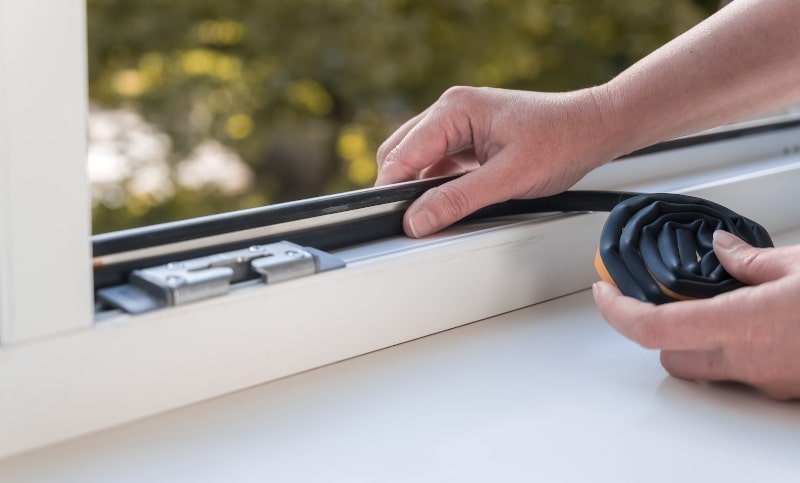
Thermal Performance
Casement windows generally outperform sliding ones in terms of U-value and Solar Heat Gain Coefficient (SHGC) — two key energy metrics. A lower U-value means better insulation. According to the National Fenestration Rating Council (NFRC), casement windows often score lower U-values, especially when paired with double or triple glazing and Low-E coatings.
According to the study "Evaluation of Residential Window Energy Performance" by Natural Resources Canada, casement windows demonstrated superior insulation due to their compression seal design.
Frame and Glass Considerations
Casement windows offer more flexibility for energy-efficient glazing options, including:
- Triple-pane glass
- Argon or krypton gas fills
- Warm-edge spacers
Sliding windows can also include these features, but they are often chosen for more basic installations due to their simpler design.
How do casement and sliding windows compare in cost?
Understanding the cost implications of each window type can help you strike a balance between budget and long-term value.
Initial Purchase and Installation Costs
Casement windows are generally more expensive upfront due to their complex hardware and sealing mechanisms. The crank system and hinge components raise manufacturing and installation costs.
Sliding windows are less costly to produce and install, primarily due to their simple design and fewer moving parts.
Window Cost Factors
| Cost Factor | Casement Windows | Sliding Windows |
|---|---|---|
| Purchase Price | Higher | Lower |
| Installation Cost | Higher | Lower |
| Maintenance Cost | Moderate (crank/hinge repairs) | Low (track cleaning) |
| Lifespan Value | High (long-term performance) | Moderate |
Long-Term Value
Sliding windows typically offer lower upfront costs, but casement windows often provide better long-term value through improved energy efficiency and durability..
In addition, various energy efficiency programs and rebates in Canada may favour Energy Star-certified casement windows, improving their cost-effectiveness over time.
What are the pros and cons of casement windows?
Casement windows are known for their superior ventilation and modern efficiency, but they are best suited for specific rooms and use cases where airflow, energy performance, or reachability are key factors. Let’s look at the whole picture — from user feedback on forums to expert insights.
Pros
- Exceptional ventilation: Casement windows open completely, allowing air to flow directly through the entire frame.
- Unobstructed views: With no central rail or track, casement windows provide a clear line of sight.
- Tight sealing: Compression seals offer excellent protection against drafts, making them ideal for energy-conscious homes.
- Ease of cleaning: Especially in upper-storey windows, being able to swing the window open makes both sides accessible from inside.
- Stylish appearance: Casement designs often feature a refined, contemporary look that complements a wide range of home styles.
Cons
- Hardware can wear over time: Hinges and cranks may require periodic maintenance or replacement.
- Limited in vast spaces: They’re not ideal for rooms needing broad horizontal window spans.
- Exterior clearance required: Because they swing outward, casement windows need space to open, which may be an issue near patios or walkways.
- More expensive than sliders: The cost of both the window and installation is generally higher.
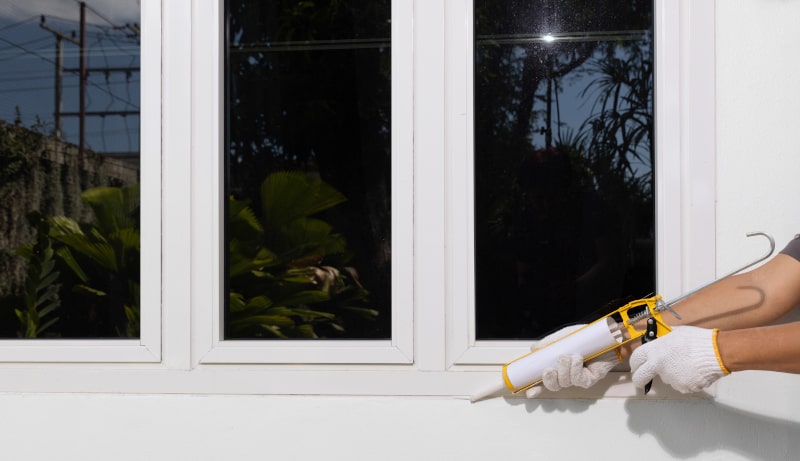
What are the pros and cons of sliding windows?
Sliding windows are widely appreciated for their simple operation and cost-effectiveness, but they come with trade-offs. Here’s a closer look at the practical advantages and limitations of sliding windows.
Pros
- Ease of operation: Just slide the sash to open. No cranks or levers required.
- Great for tight spaces: Since they don’t swing out, they’re perfect where exterior clearance is limited.
- Affordable: Typically lower cost for both materials and installation.
- Modern design: Their clean lines and horizontal layout suit contemporary homes well.
- Fewer mechanical failures: Minimal hardware means fewer parts to break or maintain.
Cons
- Track maintenance: Dirt, debris, and ice can clog the sliding track, requiring regular upkeep.
- Limited ventilation: Only half of the window opens, reducing airflow compared to casements.
- Less energy efficient: Weather stripping doesn’t create as tight a seal as casement compression locks.
- Obstructed views: The middle frame rail can interrupt sightlines.
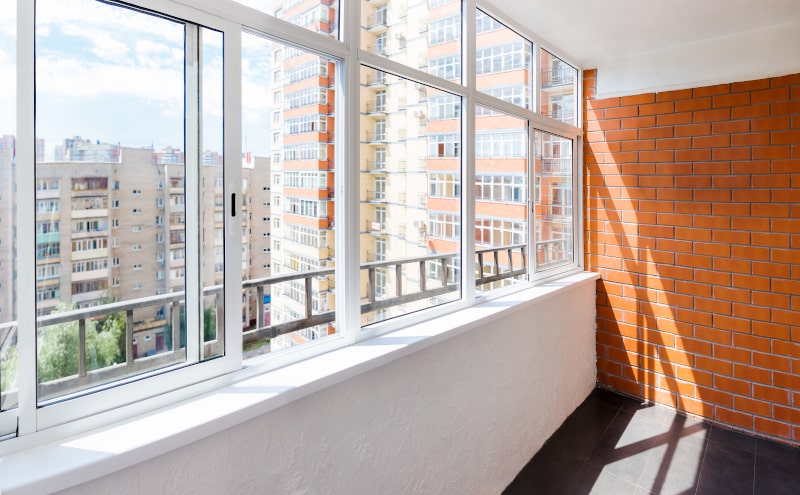
User feedback on renovation forums indicates that sliding windows are especially favoured in basement or rental units, thanks to their affordability and ease of use. However, some note frustrations with track cleaning and lower insulation during winter.
Helen Sin notes:
"Sliding windows offer long-term simplicity and ease of use. However, track durability may be impacted by snow or debris in certain environments,”
When is a casement window the better choice?
Choosing the right window is often about context — where it’s going, what you need it to do, and how you expect it to perform in the long run. Let’s explore real-life use cases where casement windows shine.
Kitchens and Hard-to-Reach Areas
Casement windows are ideal for kitchens and bathrooms, particularly above sinks or counters. Their crank mechanism allows easy opening without stretching or leaning.
Rooms Requiring Maximum Ventilation
If your space lacks airflow, casement windows provide superior ventilation. Their whole opening lets fresh air in and stale air out more effectively than sliding alternatives.
Cold or Windy Regions
In harsher climates, casement windows provide better weatherproofing and thermal insulation, making them an ideal choice for homes in colder parts of Canada. The compression seal blocks wind better than slider weather stripping.
Step-by-Step Use Case: Upgrading a Second-Storey Kitchen
- Assessment: The Homeowner has poor airflow and cannot easily reach the current sliding window.
- Selection: Casement window with a single crank handle selected for easy reach and full ventilation.
- Installation: The Window is installed to swing outward, opening up space above the sink.
- Result: Improved airflow, more straightforward operation, and enhanced winter insulation.
When should you choose a sliding window instead?
While casement windows excel in specific areas, sliding windows hold their own — especially in contexts where space-saving, width coverage, and simplicity are top priorities.
Ideal Use Cases
Sliding windows are handy when you need:
- Wide openings: They’re perfect for broad wall areas where vertical windows would look disproportionate.
- Minimal visual obstruction: With fewer frames interrupting the view, sliding windows offer clean sightlines.
- Low-profile design: In areas where outward-swinging windows are a hazard or obstruction, like patios, decks, or walkways.
When to Choose Sliding Windows
| Scenario | Why Sliding Works Well |
|---|---|
| Basement window replacement | Compact design fits tight openings |
| Wide horizontal wall space | Sliding windows match the proportions |
| Near patios or walkways | No outward swing avoids obstruction |
| Low-maintenance or rental properties | More straightforward design = fewer repairs |
| Modern home aesthetic | Clean lines complement contemporary styles |
How do casement and sliding windows affect natural light and airflow?
One of the most underestimated differences between window types is their impact on light entry and air circulation. Here’s what you need to know.
Glazing Area and Light Penetration
Casement windows often have fewer obstructions and mullions (vertical dividers), which means a cleaner pane and more natural light. The sash is flush with the frame when closed, maximizing the glass area.
Sliding windows do have one fixed panel, but many models are designed with narrower frames, especially in double or triple-wide units. This gives a broader total glass area but may include more frame interruption.
Airflow and Ventilation Angles
Casement windows allow full-frame ventilation — the entire sash opens outward, directing air into the room. You can also angle them to catch side breezes, giving them a natural advantage in cross-ventilation.
Sliding windows typically provide 50% ventilation, as only one side opens. While still useful, the straight glide doesn’t allow for directional air control.
Light & Airflow Comparison
| Factor | Casement Windows | Sliding Windows |
|---|---|---|
| Glazing Area | High, minimal framing | High, but divided in multi-units |
| Ventilation Percentage | Up to 100% | About 50% |
| Airflow Directionality | Adjustable (angled opening) | Fixed (linear flow) |
| Best Use for Light | Narrow spaces, vertical lighting | Large walls, horizontal light |
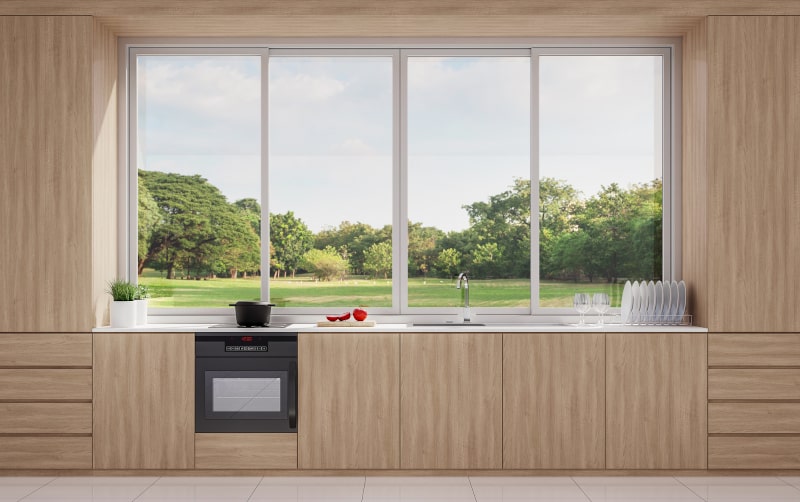
Are there differences in maintenance and durability?
Both casement and sliding windows can last for decades — but they differ in the amount of work required to stay in top shape.
Hardware Wear and Durability
- Casement Windows: The crank mechanism, locks, and hinges are subject to mechanical wear over time. In areas with extreme weather or salty air, these components may corrode or stiffen without regular upkeep.
- Sliding Windows: With fewer moving parts, they tend to be more durable. However, sliding tracks can warp or jam from accumulated debris, ice, or a lack of lubrication.
Cleaning and Accessibility
- Casement: Can be opened fully for easy access to both interior and exterior panes — especially useful for upper-storey cleaning.
- Sliding: You may need to remove the sashes to clean the outside, which can be less convenient, particularly on higher floors.
Replacement Parts and Repairs
- Casement parts, such as cranks and hinges, can be more complex to source, especially for older models or custom sizes.
- Sliding window components (rollers, locks) are generally easier to replace and more standardized across brands.
Forum reviews reveal a mixed bag: Some homeowners prefer the sturdiness of casement frames, while others are frustrated by the failure of their cranks. Meanwhile, sliding windows receive praise for their simplicity but criticism for the difficulty of cleaning tracks in snowy regions.
What’s the best window type for your home?
Choosing between casement and sliding windows isn’t about one being objectively better — it’s about what fits your specific home, climate, and lifestyle.
Summary Comparison Table
| Category | Casement Windows | Sliding Windows |
|---|---|---|
| Energy Efficiency | Excellent (tight seal) | Good (weather stripping) |
| Cost | Higher upfront and installation costs | Lower purchase and installation costs |
| Maintenance | Mechanical upkeep (cranks, hinges) | Track cleaning |
| Ventilation | Full opening, adjustable direction | Limited to half of the opening |
| Natural Light | Minimal frame, high clarity | Wider view, some frame interruption |
| Ideal Locations | Kitchens, upper floors, cold climates | Basements, patios, and wide openings |
Still Deciding? Here’s How to Choose
Choosing between tilt-and-turn and casement windows depends on your space, lifestyle, and comfort priorities. Tilt-and-turn models offer unmatched flexibility, security, and ease of maintenance — making them ideal for upper floors or homes where airflow control is crucial. Casement windows, on the other hand, provide wide-open ventilation and timeless simplicity, making them a smart fit for ground-floor rooms or classic layouts.
Still unsure which option best suits your home?
Our Canadian Choice specialists are here to help you compare, plan, and choose with confidence — no pressure, just honest advice.
1000’s of Colours & Textured Finishes
Transform your home from ordinary to extraordinary with our new coloured and non-glare textured finishes. Available in a wide array of colours as well as custom matched colours for your very own personalized design.
Our Most Popular Replacement Window Colours:






